When it comes to choosing what lights to use for your indoor hydroponic garden, the selection can be overwhelming. Today I want to talk about the various groupings of hydroponic lights that are available, and why you would choose one over another.
Lighting is hands down one of the most important factors for growing healthy plants. Wavelength and temperature can have a major impact on your plants’ height, leaf size, and harvest. First off, a bit of cool science behind light itself.
The science behind light wavelengths
Imagine, if you will, you are staring at a completely flat pond. Then you throw a pebble into the middle and watch the ripples of water move outward. This is very similar to what light waves look like. The cool part is that the size of the waves depend on the color of light.
Red light such as infrared, microwave, or radio have wide and long wavelengths that contain less energy. On the other hand, violet light such as X-rays, UV, and gamma rays have short and narrow wavelengths with high energy.
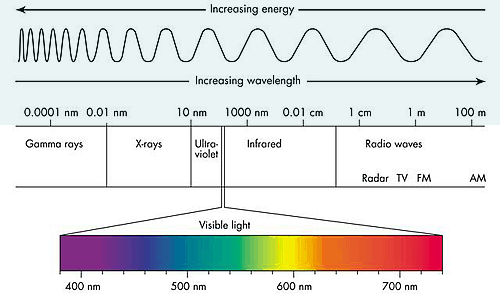
Understanding the light spectrum
Light plays an essential role in plant growth through photosynthesis. In the photosynthetic process, plants use (convert) light, carbon dioxide, water, and energy (in the form of ATP) to create sugars and oxygen.
What our brains perceive as natural, or white light from the sun is actually made up of all the colors of the rainbow. That being said, light has three major colors- red, blue, and green. When we look at the vast majority of plants we see the color green. This is because plants don’t absorb much green light, instead it reflects off of them back into our eyes, making them appear green. Leaves don’t typically appear blue or red, which means that they absorb those parts of the light spectrum and use them to grow. This is the light that plants use during photosynthesis to drive growth.
The term PAR or photosynthetically active radiation is defined by the range of wavelengths that research has determined to be best for plant growth. This corresponds to the visible light spectrum, with a particular importance on blue and red wavelengths.
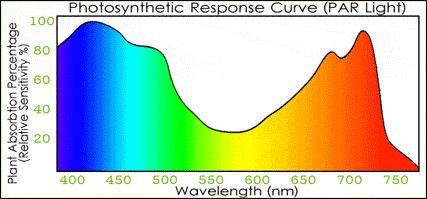
Blue light
Blue photons drive photosynthesis and regulate the opening of stomata. Stomata are the tiny openings on leaves that control both the uptake of carbon dioxide and the loss of water vapor through transpiration. Generally, only a low intensity of blue is needed for fully functional photosynthesis. As a rule of thumb, plants grown in only blue light will be smaller with thicker and darker green leaves (however don’t mistake this for what could be an overdose of nitrogen).
Red light
Opposite to blue light, plants grown under only red light have a stretched, elongated appearance, with flat, thin leaves. Red light is most important at flowering, where the pigment phytochrome (controls photomorphogenic responses in plants) mediates flowering. Red light in the 640-720 nm range also stimulated stem growth, helping to elongate the plant.
Phytochrome is a unique chromoprotein that can exist in two photointerconvertible forms. Woah…let’s break that down a little. Simply put, this means phytochrome can exist in two functionally different forms. Photointerconvertible means that different wavelengths of light sensed by the plant is what causes the two forms to switch between one another. So how does that happen?
Red light exposure converts inactive phytochrome (Pr) to the active and functional Pfr, which initiates numerous developmental responses such as seed germination, chloroplast development, stem elongation, and flowering. Conversely, darkness or exposure to far-red light converts the active form of phytochrome (Pfr) to the inactive form (Pr). To wrap it all together, plants regulate day length (photoperiodism) by measuring the Pr/Pfr ratio, which then stimulates the correct physiological processes, whether thats flowering, vegetative growth, or senescence.
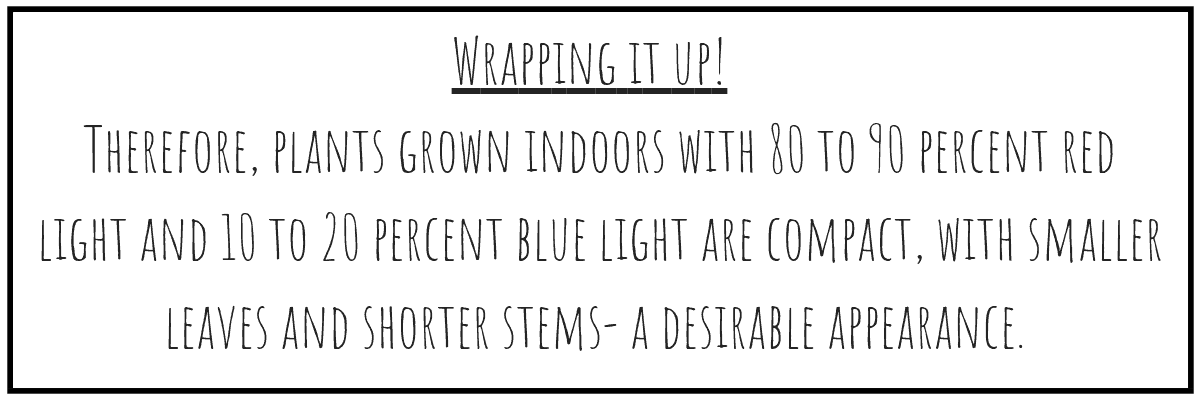
Is it really that simple?
Welllll…yes….but not always. Okay, so what do I mean. If you are interested in setting up a simple hydroponic system, it really is that simple. Make sure you have some decent light that includes some red and blue wavelengths and your plants will likely grow just fine. However, if you are interested in fine tuning growth and producing the best crop possible, then it gets a little more complicated.
Understanding watts
Simply put, watts tell us the energy input a light requires. Thus a watt is a unit of power indicating the rate at which electricity is used. This was simple when everything was incandescent bulbs, however, nowadays this is far more complicated. The quality of components and overall design (particularly with LEDs) can determine the watts.
Understanding lumens
Lumens are a unit measuring the total quantity of light from the visible spectrum emitted from a light source. Sounds simple right- more lumens = more light. Well not exactly. What is actually important is how much light will actually reach your plants. The only way to truly measure this is with a lux meter, which I’m going to guess most of us do not own. In the end, you need a hydroponic light that produces enough lumens to actually trigger plant growth. There is no exact number, but many growers have stated somewhere between 300-800 lumens will be sufficient.
In reality, if you are interesting in measuring the intensity of your light, you should be looking at the whole spectrum. In this case, you would want to use a PAR meter. Remember PAR stands for photosynthetically active radiation- the spectral range of light between 400 and 700 nm (the colors plants use to drive photosynthesis). Lux meters are often set to measure only the brightest, most intense light, whereas PAR meters measure the entire spectral range.
Lastly, what does full spectrum actually mean?
When companies advertise full spectrum lights, they are often referring to the fact the produce a continuous light across the vast majority (if not the entire) PAR spectrum. Simple as that!
___________________________________________________________________________________________________________________
If you aren’t interested in the technical in’s and out’s of the various hydroponic lights, I’ve listed a few here that I recommend for any grower. Note that I have excluded the extremely expensive top tier LED lights, as these are overkill and out of the price range of most growers.
___________________________________________________________________________________________________________________
Hydroponic lights: So many options
Indoor growers have a huge selection of hydroponic lighting options at their disposal. This can range from a bright window sill, to a powerful HID grow light. Just like your nutrient solution is critical to the health of your plants, so is you lighting. The amount of light you need depends on the size of your garden and the plants you want to put in it.
Fluorescent lighting
Fluorescent lights come in a variety of shapes and styles. That being said they all produce light through the same mechanism. An electric current heats up gas inside the tube, which then emits a UV light. The UV light then hits a phosphorus coating on the inside of tube and is converted to visible light.
The numbers you see on the side of fluorescent tubes give you information about how it works. Tubular lights will have a “T” rating indicating the diameter of the tube. T5 represents 5/8″, while T12 would be 12/8″ (1.5 inches). T12’s are commonly used for general lighting applications, but generally they’re not bright enough for good plant growth.
T5 Fluorescent lights
These are the most common lights seen by home gardeners looking to start vegetable seeds indoors before transplanting them for the summer. They produce little heat and plants love the light they produce. T5 lights can produce around 100 lumens per watt, which essentially means it uses less energy to produce more light. This should be the primary goal of our lighting setup- using less energy!
T5 hydroponic lights (grow lights in general) are rated for a life of around 20,000 hours (in most cases). This means you get plenty of grows with having to worry about replacement.
Lower heat output. Heat can be one of the biggest problems for indoor growers. Excess heat means wasted energy, plus the need for a cooling system to protect your plants. This also means you can bring your T5 lights extremely close to your plants without a risk of burning them. This generally increases growth and yield.
Finally, they are extremely affordable. If you are new to indoor growing, this is a great place to start as you can pick up a T5 lighting system for around $50.
Compact Fluorescent bulbs (CFL’s)
These are just like other fluorescent lights, with one exception. They pack a large punch in a relatively small bulb. Some of them can reach up to 200 watts. This hydroponic lighting is ideal for small setups. The can be tough to beat when it comes to ease-of-use, availability, and cost.
High Intensity Discharge lighting
For the longest time, this was easily the most popular hydroponic lighting choice for seasoned indoor growers. These come in two different options: Metal Halide and High-Pressure Sodium. These emit a greater intensity of light compared to fluorescent lights. However, this comes at a cost…literally. These hydroponic lights are on the expensive end.
Metal Halide (MH) lights
Metal halide hydroponic grow lights emit a light that’s strongest in the blue end of the light spectrum. This type of light produces a compact and leafy growth. The downside to this is during flowering and fruiting periods when you want a greater level of red light. However, this is not an issue if your focused on growing greens.
Some manufacturers are now mixing metal halide technology with other technologies to introduce more red light into the equation for more balanced growing capacities. They are typically rated between 100-150 lumens/watt, with a life around the 20,000 hour mark.
The downside to metal halide lights is the heat output produced within the immediately vicinity. To put it simply, touching a bulb that has been running for several hours can actually result in serious burns.
When should you consider using a metal halide grow light?
As briefly mentioned above, they are best suited for vegetative growth, creating dense and lush canopies of greens.
High-pressure Sodium (HPS) lights
HPS bulbs are very similar to MH bulbs in terms of overall function, but they are rated to last slightly longer. That being said, most manufacturers recommend replacement every 18 months or so due to potential degradation.
The major difference from MH hydroponic lights is that HPS lights emit strongly at the red/orange end of the spectrum. This means they promote flowering and fruiting. However, they can also induce leggy growth during vegetative growth states. Therefore, many growers will often pair them with MH hydroponic lights in their gardens.
Ballast selection
Both metal halide and high-pressure sodium hydroponic lights require ballasts in order to function. However, they cannot run on the same ballast. HPS ballasts include an igniter, whereas MH ballasts do not. However, some newer ballasts today are capable of running both systems. Just be sure to read the packaging.
It is critical to select the appropriate ballast for your bulb. The color temperature of MH bulbs will be affected by the electrical system itself. If under-powered, light output will become even more blue in color (due to mercury evaporation). Conversely, over-powered bulbs can be downright dangerous. The overheating and increased pressure can actually cause explosions.
The simplest way to combat any of these problems is to speak with your local expert and choose the highest quality electronic ballast that is dimmable, and supports both MH and HPS bulbs.
So which of these two HID bulbs do you choose?
Well there actually isn’t an answer to this question. It would be comparing apples and oranges. MH bulbs are great for vegetative growth, while HPS is best suited to flowering or fruiting growth states. Consider incorporating both of these hydroponic lights into your grow. That’s if you have the dollars to spend…doing so would not come cheap.
Light emitting diode (LED)
This is ultimately the future of hydroponic lights, whether you want it to be or not. They are also the most controversial grow lights on the market, simply because of how new they are to the growing world. Early adapters a few years back were rather disappointed with the results. Today, this is very different, as some of the best grow lights available are LED.
LED hydroponic lights use a semiconductor and electroluminescence to generate light. Some of the most sophisticated LED grow lights even include tiny reflectors and other engineered parts to focus the light even further. The biggest advantage is that LED grow lights can be engineered to emit very specific wavelengths of light, increasing the amount of control the grower has on their garden. LED lights produce the least amount of heat of any of the lighting options discussed here. That can be important if your garden is in the living area of your house. MH or HPS hydroponic lights will need a fan to keep the system cool, while this is no issue with LEDs.
In terms of pricing, LED grow lights can range drastically. There are extremely cheap models available and extremely expensive options out there. Based on some Amazon searches and discussions with my local hydroponic stores, they average out somewhere in between fluorescent lights and HID setups where there is more than just light bulbs to buy.
One thing to remember is that not all LED lights are equal. While every manufacturer seems to state their LED hydroponic lights will last for 50,000 hours or longer, this is likely only true for the higher quality lights. Cheaper units can actually display significant light intensity drops within just a few months of normal use.
Are you ready to choose?
If you were like me in the beginning, probably not. There are so many terms and numbers batted around, it can be hard to keep them all straight. Hopefully, this article has helped clear up some confusion and you will feel more confident with purchasing a hydroponic light.
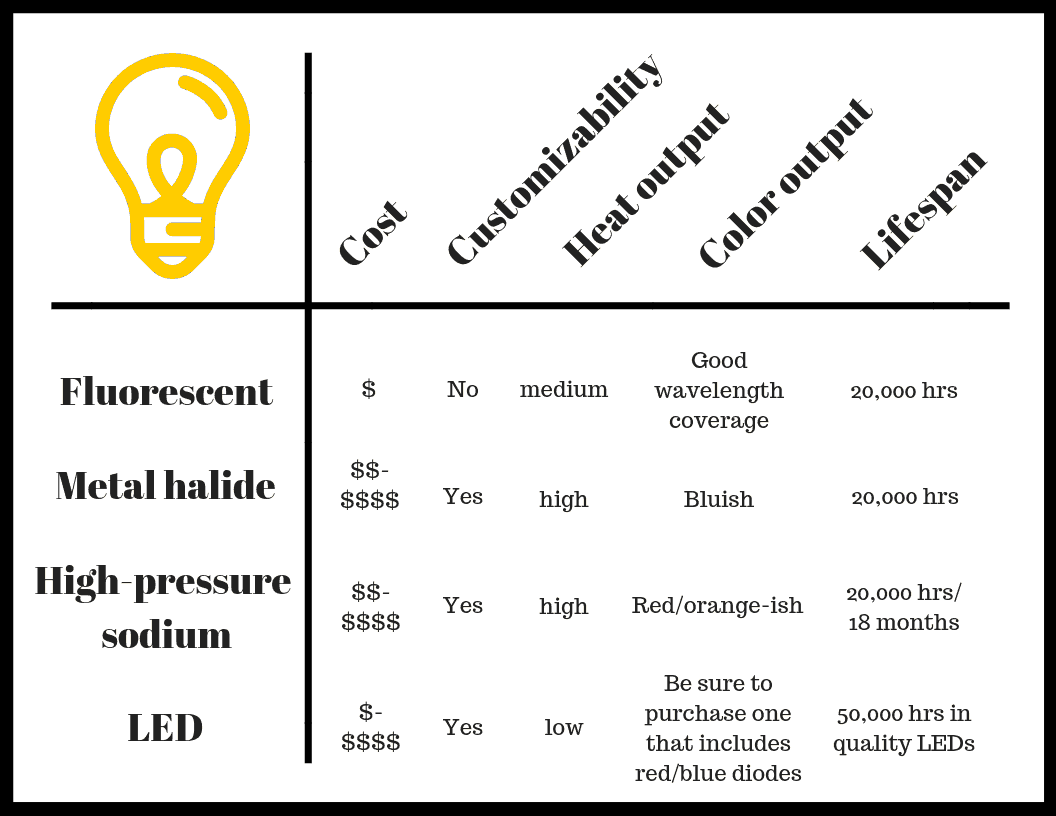
Use our DIY guide to building your own deep water culture system to get started with hydroponics.

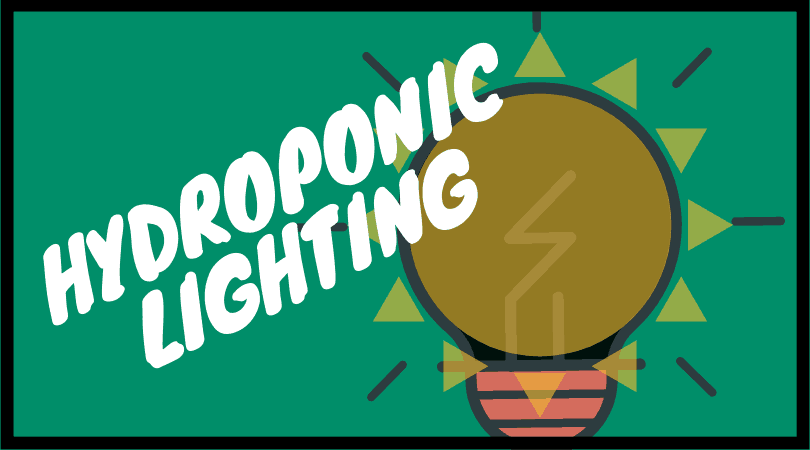
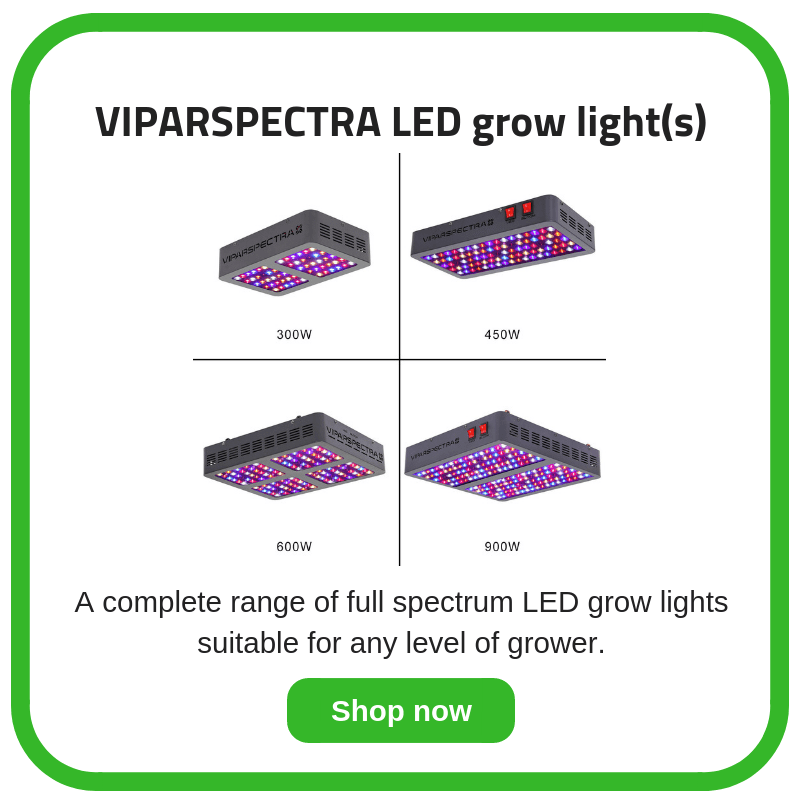
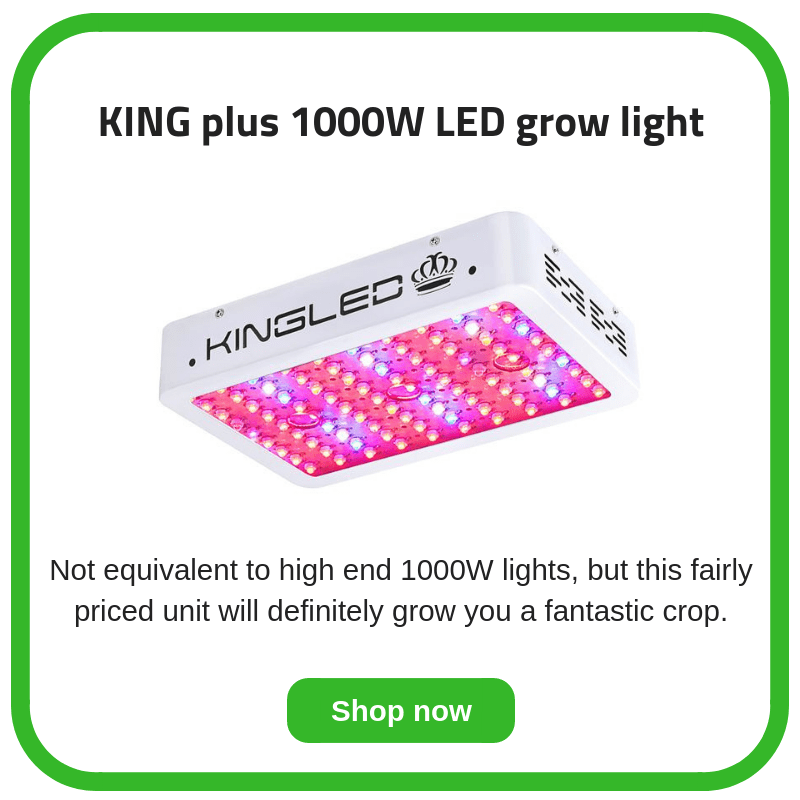
Hey, it’s Melina!
I have been looking around for what lights to use for my first hydroponic setup and this article was a great help. I decided to take the plunge and go with LED grow lights!
Hi Melina,
Great choice! I have been using LED’s right from the start and I couldn’t be happier.
Good luck growing!
Hey!
I’m guessing you have been using your LED lights for a while now. What are your thoughts? Has it increased your energy bill?
Cheers,
Zoila
Hi Zoila,
I feel like I can now give a great answer to this question. We have had our lights running 10+ hours a day for the better part of 4 months, and I can safely say I have not seen an increase in our electricity bill at all. I am very happy I went with the LED route as it saved money in other areas, such as electricity use, as well as the need to dissipate heat from other lighting systems. Cheers, Jeff